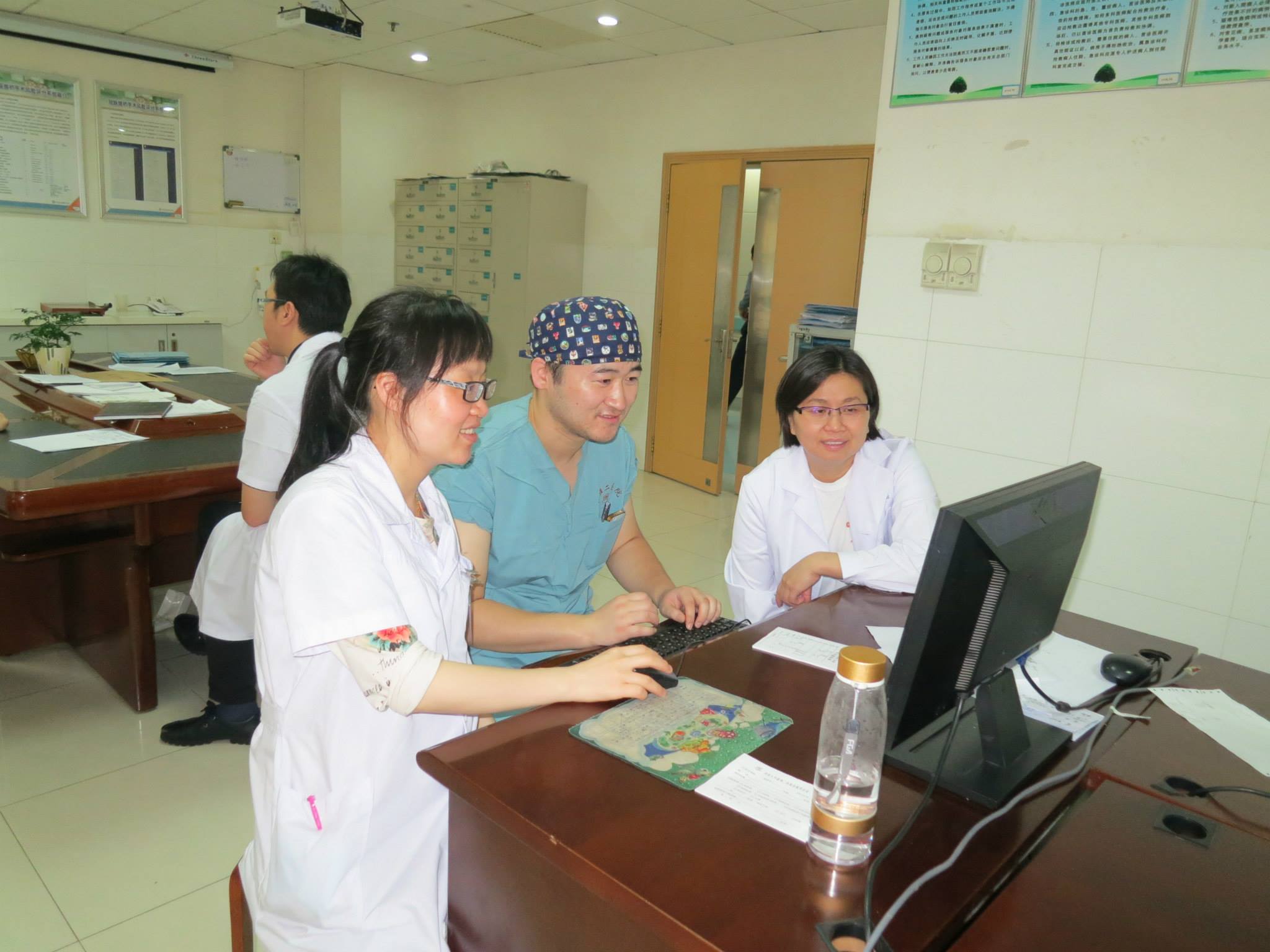
Hoan Linh Banh (on right) trains pharmacists in China
When Hoan Linh Banh joined the Department of Family Medicine in 2013 as an associate professor, she never expected so much of her time would be spent off-campus-in China.
"It does make you appreciate the little things you have in Canada," says Banh with a laugh. "It was kind of difficult to get used to at the beginning."
Banh is engaged in an innovative program bringing her expertise in clinical pharmacy to the Second Xiangya Hospital of Central South University in China's Hunan Province-one of China's largest teaching hospitals. Over the past year, and at the invitation of Chinese health leaders, she has visited the country twice for a period of five months in total, with another two extended visits scheduled in 2016. Her aim is to help pharmacists in China be better utilized in both their research and how they provide pharmaceutical care.
Banh's journey began when a visiting scholar from China sought her out, looking for an expert who could train his country's pharmacists to become more patient focused. Past attempts to send Chinese pharmacists to North America for training had proven unsuccessful and it was determined a new training model (train-the-trainer) was needed. At the suggestion of Andrew Cave, a professor in the Department of Family Medicine, it was decided that sending U of A expertise directly to China may offer a better solution.
"What they learn in the North American system doesn't translate into their system. So having [Banh] seconded there allows her see what can be done through working in their system. It's simply better to work in their place," says Cave.
In all, Banh will spend eight months seconded in China on the project over a two year period. Cave and Banh believe it's the first time a major university has loaned a professor for this type of project for such an extended period of time. The initiative is being paid for entirely by Second Xiangya Hospital of Central South University. While the overarching goal is to improve China's training of pharmacists, it's also hoped the Faculty of Medicine & Dentistry will benefit through increased opportunities for international collaboration and access to vast quantities of data which can be used for research purposes.
"For example, we could be conducting research and need 2,000 patients for a study," says Cave. "There it could take a month to gather those patients. Here we would be recruiting patients forever."
Banh, whose grandparents are Chinese and who grew up in neighbouring Vietnam, says even with her cultural familiarity adjusting to the Chinese system of providing health care has proven challenging.
"The system is completely different," says Banh. "It took me about two weeks to understand how it worked, how their health professionals work within the hospitals, and how the pharmacists fit in."

Unlike in Canada, Banh says there are no family doctors in China. Patients instead must seek out care in centralized hospitals and try to find the doctor they feel would be best for them. Within that system, there is little to no communication between physicians and pharmacists when it comes to patients and their medications. Additionally, Banh says pharmacists have little experience dealing closely with actual patients.
"Clinically, a team of five pharmacists can fill out 10,000 prescriptions a day there because everything is automated and extremely efficient-but they normally don't teach the patient how to use the prescribed medications. So they have little experience in being clinical pharmacists, although they do have quite a bit of desire to learn."
In her initial time in China, Banh has already worked on increasing the collaboration between pharmacists and attending physicians in the hospital, many of whom she says are unaware of what pharmacists can do to help them.
"Many of the patients are farmers or are uneducated. They need somebody to help them understand why they're taking medications and the potential side effects. Having a pharmacist on-site will help educate the patients and reduce unnecessary medications," says Banh. "Having more pharmacists helping will also relieve the burden on attending physicians so they can focus on what they're trained to do."
She says her other major accomplishment has been enticing Chinese pharmacists to engage in clinical research and to think critically about the type of work they are doing. She hopes it will soon yield results for improved patient care.
"They have such a large database that nobody had tapped into. They didn't know it's publishable," says Banh. "Once we talked about that, they were very excited."
After recently returning to Edmonton this November, Banh will re-adjust to life in Canada for a few months before heading back to China again in the spring. While there is still much work to be done, she's excited to continue sharing her expertise abroad-and equally thrilled by the opportunities for the faculty in the future.